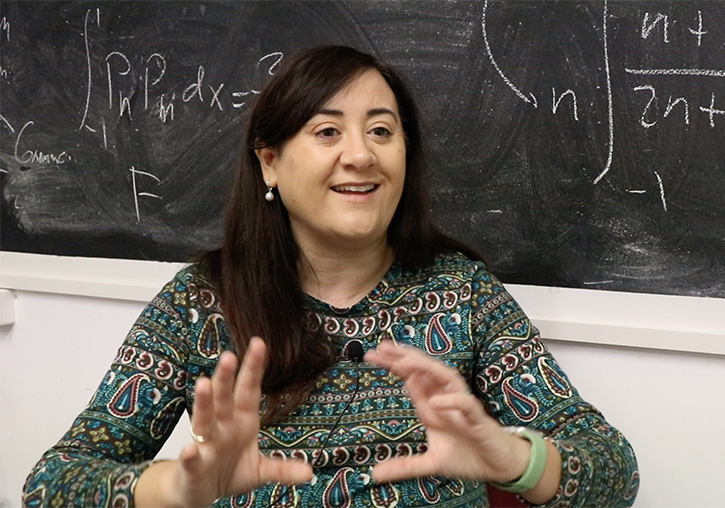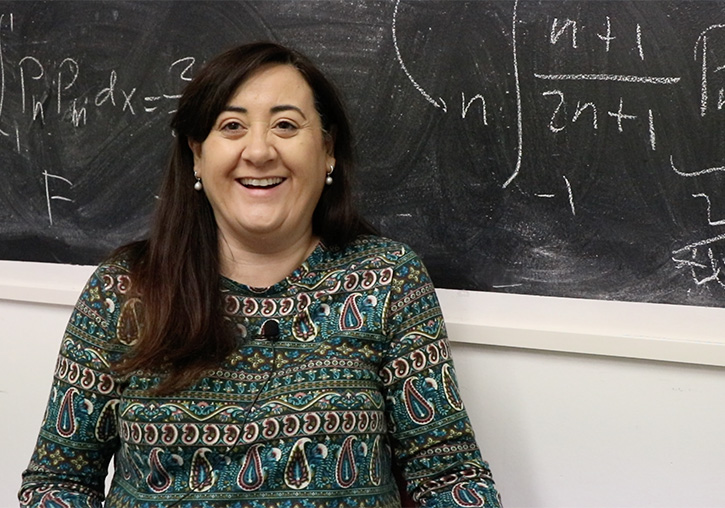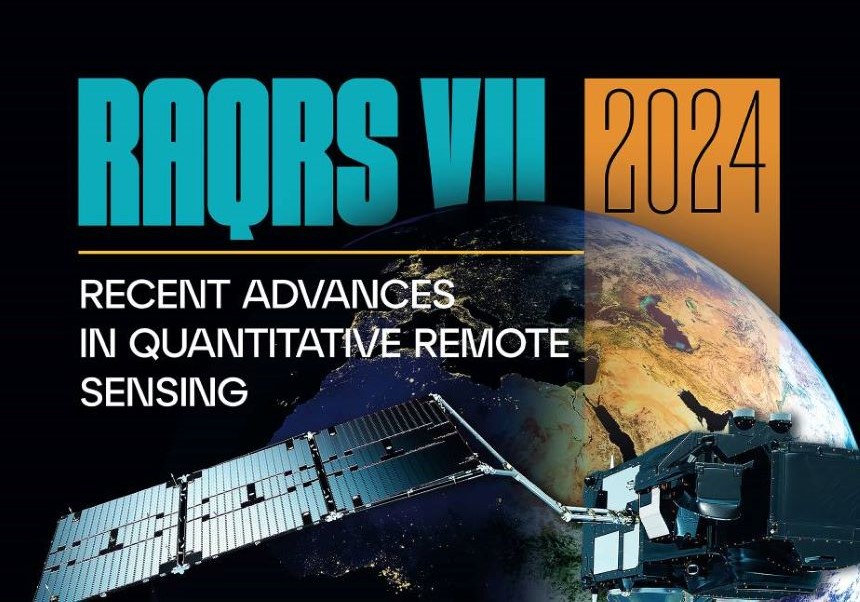Mariam Tórtola: “A different behaviour between neutrinos and antineutrinos could help us understand the origin of the Universe”
- Scientific Culture and Innovation Unit
- January 11th, 2023
Mariam Tórtola is a full-time professor in the Department of Theoretical Physics at the University of Valencia; researcher at the Institute of Corpuscular Physics (IFIC), a mixed centre of the University of Valencia and the Spanish National Research Council (CSIC); coordinator of the third year in the Degree in Physics and member of the Equality Commission of the Faculty of Physics and the IFIC. Her main work consists of researching astroparticle physics, specifically, neutrino physics.
- As a neutrino physics researcher, could you explain to us what it is and what exactly it applies to?
Neutrinos are elementary particles we know a lot about, but about which we still have a lot to discover. They are particles that have given many surprises in history because they behave very differently from the rest. Specifically, we study the phenomenon of neutrino oscillations, whereby one type of neutrino, out of the three that exist, changes from one to a different type (or, as we say from Physics, changes its “flavour”) as that is propagating through space. Through different experiments we have observed neutrinos from the sun, neutrinos that are produced in the Earth’s atmosphere and others produced in nuclear reactors or particle accelerators. For example, we know that the Standard Model of particle physics fails in this case, since it predicts that neutrinos have no mass, but we know from experiment that they do. So, in our group we try to find a new physics to explain this phenomenon.
“Neutrinos are elementary particles we know a lot about, but about which we still have a lot to discover”
- You participate in the experimental project DUNE. Could you explain to us what its objective is and what it consists of?
The DUNE project (Deep Underground Neutrino Experiment) is an experiment that is under construction and in the design phase, which aims to build the most intense neutrino beam in the world. Its objective is to see how neutrinos oscillate and change flavour, while also observing how their antiparticles, which are antineutrinos, behave in order to study the differences in the behaviour of both. This process is very important because it can explain the origin of the baryonic asymmetry of the universe. A different behaviour between neutrinos and antineutrinos could help us understand what happened at the origin of the Universe, and how we went from a Universe with the same content of matter and antimatter we got to the one we have now, only matter. This is the fundamental key to the experiment, but it also intends to study other phenomena such as the disintegration of the proton and neutrinos from supernovae.
“The DUNE project aims to build the most intense neutrino beam in the world”
- In 2017 you were awarded the “L’Oréal Unesco For Women in Science" award for her work on DUNE. What was your role?
I am a theoretical physicist and normally theoreticians do not participate in experiments. However, at DUNE there is interest in studying the potential of the project for future research. Therefore, different theoretical groups work on it, studying the sensitivity of DUNE to the new physics. I specifically participate in the physics working group beyond the standard model. Here we have studied different types of new physics within the experiment, for example, the existence of heavy neutrinos and the sensitivity to CPT symmetry violations, among other scenarios.
- You are also part of the project Remembering Lise Meitner. Where does this idea come from and what does it consist of?
This project was born at the IFIC around a play on Lise Meitner, who discovered nuclear fission. The objective of the work is to vindicate her figure, since her role in this discovery was not recognised in History. The performance is offered for the general public, but especially for secondary school students, and its objective is for them to get to know this researcher, who does not appear in many textbooks.
Through the play, different activities have also been added to the project, such as conferences on science and gender, on pioneers in nuclear and particle physics, and a contest, Express-Art Consciousness, in which secondary school students perform artistic works of different kinds about scientific pioneers.
“The objective of the work is to vindicate the figure of Lise Meitner, since her role in the discovery of nuclear fission was not recognized in History”
- Is there any other type of project you are involved in that you would like to highlight?
I also participate in another project funded by the FECYT (Spanish Foundation for Science and Technology) and the University of Valencia, Girls4STEM, coordinated by the colleagues of the Higher Technical School of Engineering (ETSE-UV), and in which it is also to promote the scientific participation of girls in primary and secondary. Here we organise a series of professional talks in which different women experts tell their experience through short talks. This activity is having great success and we are already in the fourth edition.
On the other hand, I am also part of the Association of Women Researchers and Technologists (AMIT). And I also try to participate in activities to make women scientists visible, such as the section of the newspaper El País “Las cientificas responden” (‘Female scientists answer’), in which people ask questions and only we female experts answer.
“We want that at least girls don’t lose interest in physics without getting to know it”
- Are there any more projects scheduled to give visibility to women scientists in the near future?
Not a project as such, but I would like to point out that from the equality commissions of the IFIC and the Faculty of Physics we always organise a lecture by a female scientist on March 8. Also, on February 11, the International Day of Women and Girls in Science, we organise a masterclass in which only fourth-year ESO girls come from institutes throughout the Valencian Community. This activity consists of the students analysing a series of data, to later share them with institutes around the world through videoconference. The reason why only girls come from this course is because this is when they decide if they want to study science or literature, so the goal is that at least the girls don’t lose interest in physics without getting to know it better.
File in: Investigació a la UV , Facultat de Física , Física Teòrica , Internacionalització recerca , Institut de Física Corpuscular (IFIC) , Igualtat , Col·laboració amb empresa , Grups de recerca , Difusió i comunicació científica , Producció científica , Recerca, innovació i transferència

















